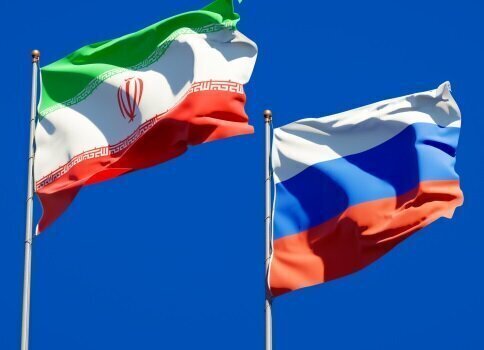Tehran, Moscow eye $10b trade target amid push for banking, logistics reforms

TEHRAN – Head of Iran Chamber of Commerce, Industries, Mines and Agriculture (ICCIMA) has called for financial and regulatory reforms to unlock a surge in bilateral trade with Russia, as the two countries seek to deepen economic ties following the signing of a 20-year strategic cooperation pact.
During a visit to Moscow on Monday, Samad Hassanzadeh met with Sergey Katyrin, head of the Chamber of Commerce and Industry of the Russian Federation, to discuss pathways to expand trade and investment.
Hassanzadeh said Iran and Russia are poised to enter a new phase of cooperation, supported by the political will of both governments and their private sectors. He underscored the need for stable and secure financial channels, the use of national currencies in transactions, and harmonized customs procedures under the Eurasian Free Trade Agreement framework.
“The creation of infrastructure for issuing Eurasian Free Trade certificates of origin is underway,” Hassanzadeh said, adding that further growth hinges on several strategic pillars: resolving banking bottlenecks, fixing currency exchange rates, upgrading transport systems, boosting rail and maritime fleets, and deepening cooperation within multilateral bodies such as BRICS and the Shanghai Cooperation Organization (SCO).
He also called for easing visa procedures for business travelers and proposed enhanced collaboration through specialized committees, joint exhibitions, investment funds, and agricultural and industrial initiatives.
Ghadir Ghiafeh, deputy head of ICCIMA, acknowledged that Iran-Russia trade has yet to reach its potential but expressed optimism that evolving geopolitical conditions would enable closer ties.
“Some Iranian products are more competitive than their European counterparts,” Ghiafeh said, noting Iran’s export of steel and specialized industrial components, including catalysts used in Russian ammonia and urea plants.
He emphasized the need for market insight, professional conduct, and ongoing engagement with Russian consumers. With the Eurasian Free Trade Agreement now in effect, Ghiafeh said Iran aims to raise bilateral trade with Russia to $10 billion over the next decade.
Kazem Jalali, Iran’s Ambassador to Russia, said political conditions are now favorable for trade expansion, adding that some banking and logistics issues are being resolved. He attributed much of the current friction to a lack of awareness among private-sector players and stressed the importance of chambers of commerce and joint business councils.
He proposed annual visits between the heads of Iranian and Russian chambers to institutionalize dialogue and cooperation.
Sergey Katyrin reported a 16 percent rise in Iran-Russia trade last year, crediting the growth to intensified collaboration between entrepreneurs. He cited increased exchanges of business delegations and backed provincial-level trade ties, saying the INSTC, BRICS, SCO, and the Eurasian corridor all remain key priorities for Moscow.
Katyrin also supported easing visa issuance for Iranian traders, saying the Russian chamber regularly forwards recommendations to the Foreign Ministry for government-level consideration.
Leonid Lozhchenko, head of the Russia-Iran Business Council, said commercial activities have accelerated since the signing of the long-term strategic pact. Over the past year, the council has organized 25 meetings and over 3,000 B2B matchmaking sessions between Russian and Iranian businesses, including small and medium enterprises.
He noted that agriculture remains a major component of trade between the two nations.
EF/MA
